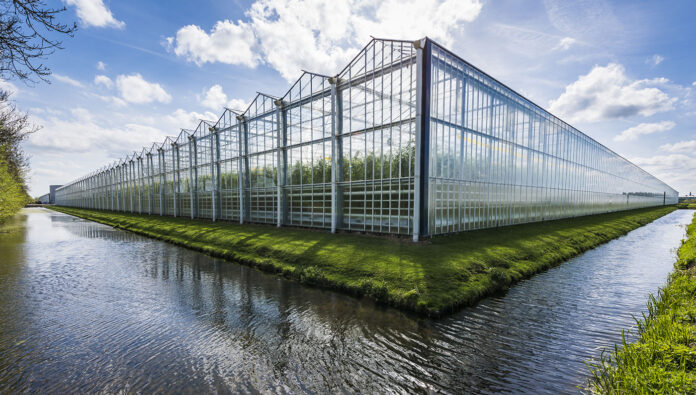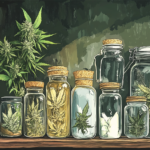A few years ago, a frosty pound of outdoor or greenhouse flower in California could fetch $1,500 to $2,000 in both legal and illicit markets. But my, what a difference a few years makes.
On the West Coast, sun-grown cannabis farmers are in a tenuous position this year, with wholesale prices plunging late last year to unprecedented lows: $200 to $500 per pound in most markets, down from $800 to $1,000 twelve months earlier. Likewise, greenhouse crop prices were down to between $600 and $800, from $1,300 to $1,600 in 2020. New Leaf Data Services Chief Executive Officer Jonathan Rubin recently estimated the spread between outdoor and greenhouse flower prices is roughly $400; between greenhouse and indoor, about $700. Break this down, and it amounts to a 40- to 50-percent price drop from 2020 for outdoor and greenhouse flower. Indoor flower, meanwhile, has maintained its premium retail price point and experienced only a 10- to 20-percent drop in the wholesale market.
In part, the price plunge is due to a production glut in nearly every state west of the Mississippi. Cannabis Benchmarks reported an oversupply of flower in Oklahoma during 2021, with the average spot price sinking by 17 percent. Compared to Q4 2020, the average price for a pound of flower in Q3 2021 was down by more than $400.
Growing divide
Whether 2021 is an anomaly or a new reality for sun-grown and greenhouse flower remains to be seen. Nevertheless, there appears to be a growing divide between these products and their high-priced, highly prized indoor cousins. So what gives?
Marketing consultant Drew Punjabi has worked with a number of brands over the past seven years, including 22Red, a cannabis lifestyle brand that produces exotic, high-end flower and oils. In his view, indoor flower has retained its top-shelf status and premium price tag thanks to its consistency and exclusivity.
“With indoor, you’re paying for a controlled environment and that consistency and quality,” he said. “There’s also the technology, the genetics, and the decisions to breed certain strains together. A lot of those genetics are hard to come by and there’s only a limited amount, which is why you see limited runs. From a marketing standpoint, companies will position certain strains as an exclusive drop, ‘so get it while you can, because we’re going to sell out.’”
Who knew bud and sneakers had so much in common? In an industry where marketing and promotion are becoming increasingly influential, new consumers are swayed as much by social media campaigns as they are by product quality—and the vast majority of marketing money is spent on indoor flower and creative new product offerings.
Potential price advantages
As a multistate operation, 22Red is able to track consumer trends across different markets, and that data leads Punjabi to believe California remains in a unique position as an influencer. “The difference I see from state to state is not the ability to match the quality, but the ability to innovate the way California always has,” he said. When 22Red wants to introduce new strains into Nevada or Arizona, for example, the company sends its grow partners from those states to California to learn the ins and outs of growing its exotic strains on a consistent basis. “I would say the biggest differentiation is just being able to compete with the evolution of the strain market in California and then recreate it at a high quality and similar volume.”
While 2021 was the most challenging year yet for outdoor and greenhouse farmers, the future of the industry surely will have a place for low-cost, high-quality outdoor weed. If U.S. companies have any doubts about that, all they need to do is look at the Canadian market. In 2019, Canadian cannabis producer Aleafia Health reported it was able to cultivate and harvest outdoor cannabis at just $0.08 per gram, or about $36 per pound. In 2020, WeedMD grew nearly 9,000 kilograms of flower at a production cost of $0.11 per gram, while greenhouse crops cost $0.84.
As more U.S. producers scale their operations and lower production costs, outdoor flower will have a major price advantage over indoor crops, and the market for “value” bud should develop and expand nationwide. Likewise, as consumers become more educated about the merits of sun-grown flower, they will develop an increased appreciation for its organic, full-spectrum qualities. Of course, the one major roadblock for outdoor cannabis remains its Schedule 1 status at the federal level. Until nationwide legalization, the growing pains for outdoor farmers are likely to continue.
“When cannabis is federally legal, there’s going to be a huge demand for outdoor and greenhouse flower on the price point alone,” Punjabi opined. “At some point, you’re going to be able to find a smoke shop on every other corner, and uneducated consumers are going to be buying based on price. Greenhouse and outdoors are always going to win there.”
The trick for outdoor growers on the West Coast will be keeping their businesses alive long enough to enjoy the new reality.












